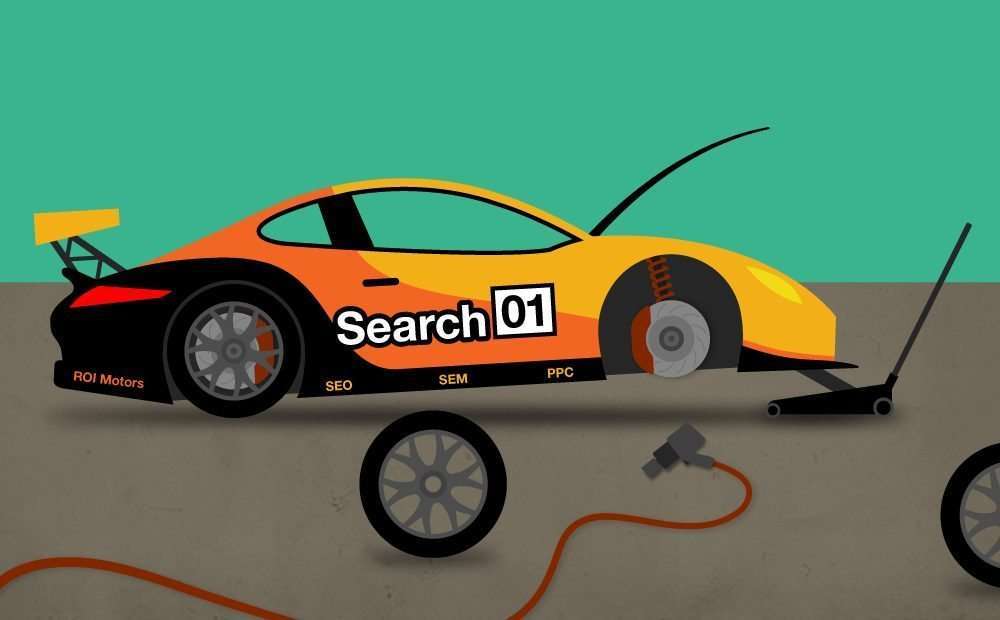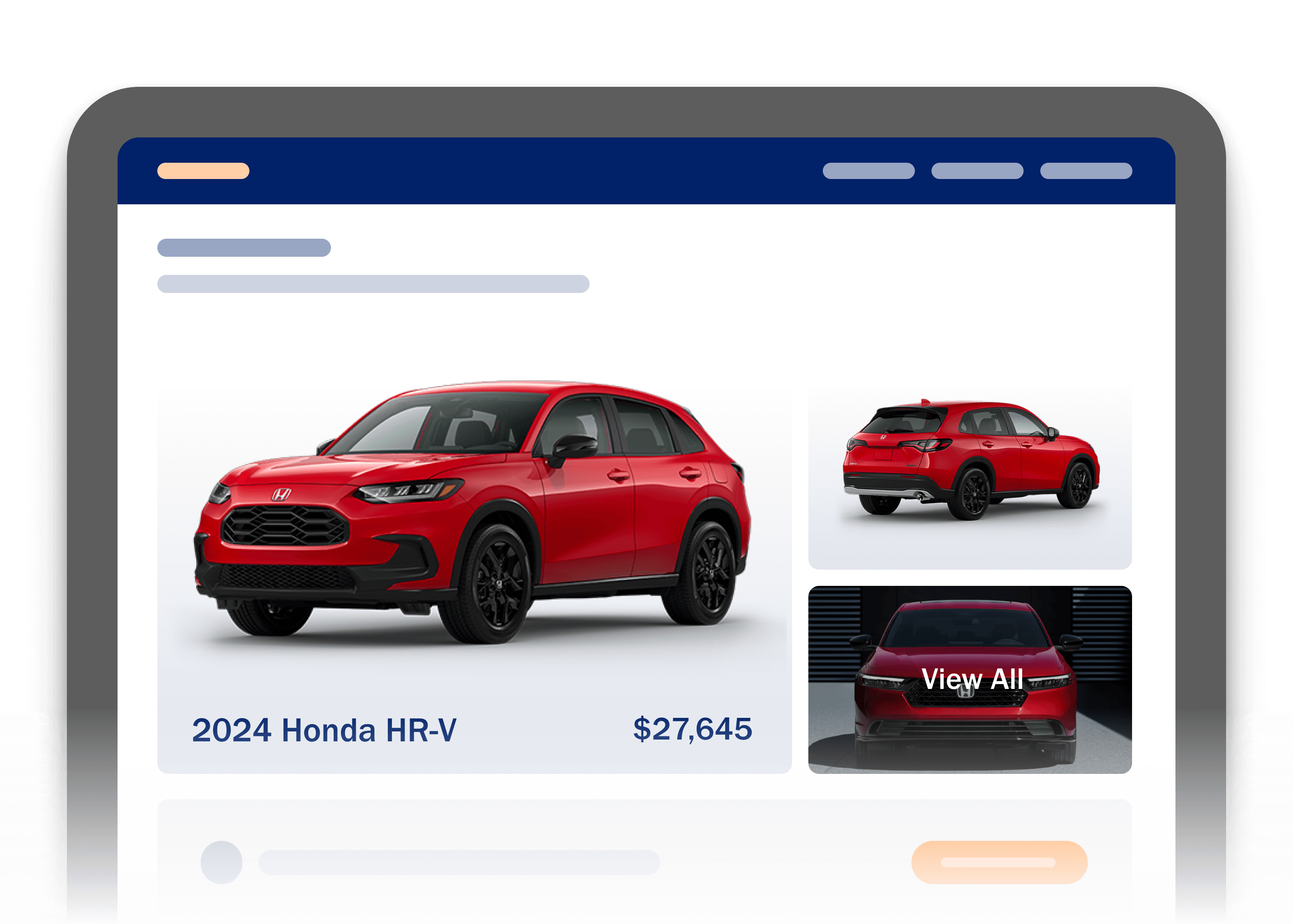Everything I cook requires multiple ingredients, no matter how short the recipe. It’s the marriage of many items that makes the end result so tasty. Similarly, vehicles operate via the same principle. Various parts and fluids must be present and working together for optimal performance.
The key elements needed for both the mechanical upkeep of a car and the culinary command of a kitchen are therefore similar: the regular collaboration of a variety of essential ingredients. Ongoing maintenance and attention to detail is also critical. For the soup to taste delicious and the engine to purr we have to keep the knives sharp and the oil topped off. The point is, a car dealership’s digital strategy also requires multiple online marketing channels, coupled with a large helping of ongoing TLC, in order to perform at its peak. And in no area is this more true than with search engine visibility. Search success rests with a combined SEO and SEM strategy.
Let’s look at how you can get your SEO and SEM working together to cast a wider net over your local target market. You may be reviewing your marketing budget and asking yourself a few questions:
A. Should your dealership use an automotive SEO service?
B. Should we only use SEM/PPC?
C. Will our PPC efforts eat up our organic visibility – or vice versa?
There’s not really an easy way to answer this. Each channel has its own pros and cons and each dealership its own set of challenges and business goals. When paid and organic begin working together as part of a total holistic strategy for digital visibility, however, your local competition better watch out.
SEO (Search Engine Optimization)
In its simplest form, SEO is a process of on/off site strategies and tactics used to increase the organic visibility of a website or page for a specific group of keywords.
SEO takes time, sort of like the 24 Hours of the famous Le Mans race. Teams have to prepare, organize, research, test, and build, starting long before the competition takes place. Once in a while, rules and regulations change just like an update to Google’s algorithm, which may prolong the preparation even further.
With content we must wait for search engines (Google, Yahoo, and Bing) to crawl a site, then populate results based upon a user’s search query and intent. Unlike Le Mans, this race never ends. You have to be in it for the long haul, and I don’t mean 3-6 months. You’re barely over the starting line at that point.
SEM (Search Engine Marketing)
In short, SEM is a way of promoting a website within search engine results pages (SERPs) by “paying to play”. Like SEO, SEM relies on targeted keyword phrases to populate results. These PPC (Pay Per Click) ads typically sit at the top or right-hand side of a SERP and their prominence depends on various factors including bid amount, daily budgets, and landing page relevance.
In automotive terms, SEM is less like a test of endurance and more like an adrenaline-fueled drag race. A car pulls up to the starting line, the light tree counts down, then in a few seconds the race is over and results are displayed. If SEO is the tortoise in this competition, then SEM is definitely the hare.
Let’s take a look at how the reptile and the rodent can work together (we know rabbits aren’t rodents but it just sounds better than “the reptile and the lagomorph”). As illustrated below, we performed a search for “cars for sale vegas”. Inside the red boxes are the ads, each demarcated with a little green “Ad” indicator. The green box represents the organic listings.
Simply put, leveraging both marketing channels allows for more exposure in the SERPs. On the SEO side, OEM guidelines can be strict, especially with on-site content and geo-targets. It’s also a best practice to limit your on-site geo-targets to only the most relevant (in terms of proximity, population, brand awareness, etc.) so as not to dilute the potential of your site to rank well for the most mission-critical areas.
SEM provides a way to expand reach into additional marketplaces, or target other makes and models, for which your site may be at an organic disadvantage. Paid advertising can also complement organic search in other ways. Remember when Google reduced its local pack listings to three positions? Many dealerships used SEM to supplement traffic they lost as a result.
Then there’s the “speed to market” which SEM enables. SEO efforts may take months to percolate. Do you have a used vehicle on the lot which you don’t normally carry? Is there a new model available you want to get eyeballs in front of right away? Why not bid on these terms (SEM) while optimizing the site for them over time (SEO)? Once the organic visibility is attained you may decide it’s time to lower those bids as the traffic has started arriving via a different channel. Another example of the two mediums working together.
Regardless of the channel, the overall goal is always going to be landing visitors on a relevant page that provides answers to their questions or information they’re seeking. As automotive digital marketers, we have only a small window (a few seconds) of opportunity to gain visitors’ trust. Otherwise, they’ll bounce off the site and take their business elsewhere, never to be seen again.
More strategic decisions.
SEO and SEM is often a balancing act. Say you’re bidding on your dealership’s name, paying to get your brand top placement on SERPs. While your monthly SEM spend is increasing, your dealership’s visibility on search engines is improving. Shoppers are more likely to reach the pages you’re promoting through your paid search efforts than through organic search results. This is great news, except that your organic search efforts are bringing in less traffic because shoppers are seeing your paid search ad way before they’re seeing your search listing due simply to SERP layouts.
So, you’ve got to ask yourself frequently if the paid search ads are worth it? Are you getting the most bang for your buck? In this example, when evaluating metrics, look for organic dips in search terms relating to your business name. How much are you spending on that? Are other dealerships also showing in the results? When users specifically search for a business by name, their intent is to visit that business’s site. If you stop bidding on your dealership name, you’ll see organic traffic start to rebound. This doesn’t happen in every case, but this balancing act and monitoring of it is something to consider when evaluating metrics and looking at adjusting SEO or SEM investment.
Another SEO and SEM strategy is to review what ads already populate for keywords under consideration. For example, someone is looking for a flight to Italy. Naturally, the search term could be “flights to Italy.” Results will look similar to this:
We can quickly see domination from 1800FlyEurope.com. Three out of four results reference “Cheap Flights” which most likely have a high click-through rate. Google trusts the top ads. How can that impact organic? What’s the strategy? Hold on, we’re getting there.
Let’s now take a look at organic rankings for the same term:
Kayak is ranking number one with “Cheap Flights to Italy” and 1800FlyEurope.com doesn’t even show up on page one. At least not at time. What does this mean? Kayak is pouncing on the opportunity to bring continuity to their paid (SEM) and organic (SEO) results in the form of high SERP placement. 1800FlyEurope.com has an opportunity to work the SERPs this way, too.
In the same vein, car dealerships can review what’s working from the PPC side, making sure to create the same search experience for their organic strategy. With multiple search results you can protect your position in very competitive territory.
In a nutshell, SEO and SEM shouldn’t be viewed as two marketing strategies operating independently of one another. Instead, view them as two similar traffic-driving tools working toward one goal: optimizing your dealership’s visibility on search engines by capturing as much SERP real estate as possible. The whole, here, is surely greater than the sum of its parts. Be it cars, dishes, or digital marketing.
Chris Nichols is an SEO Manager at Dealer.com



